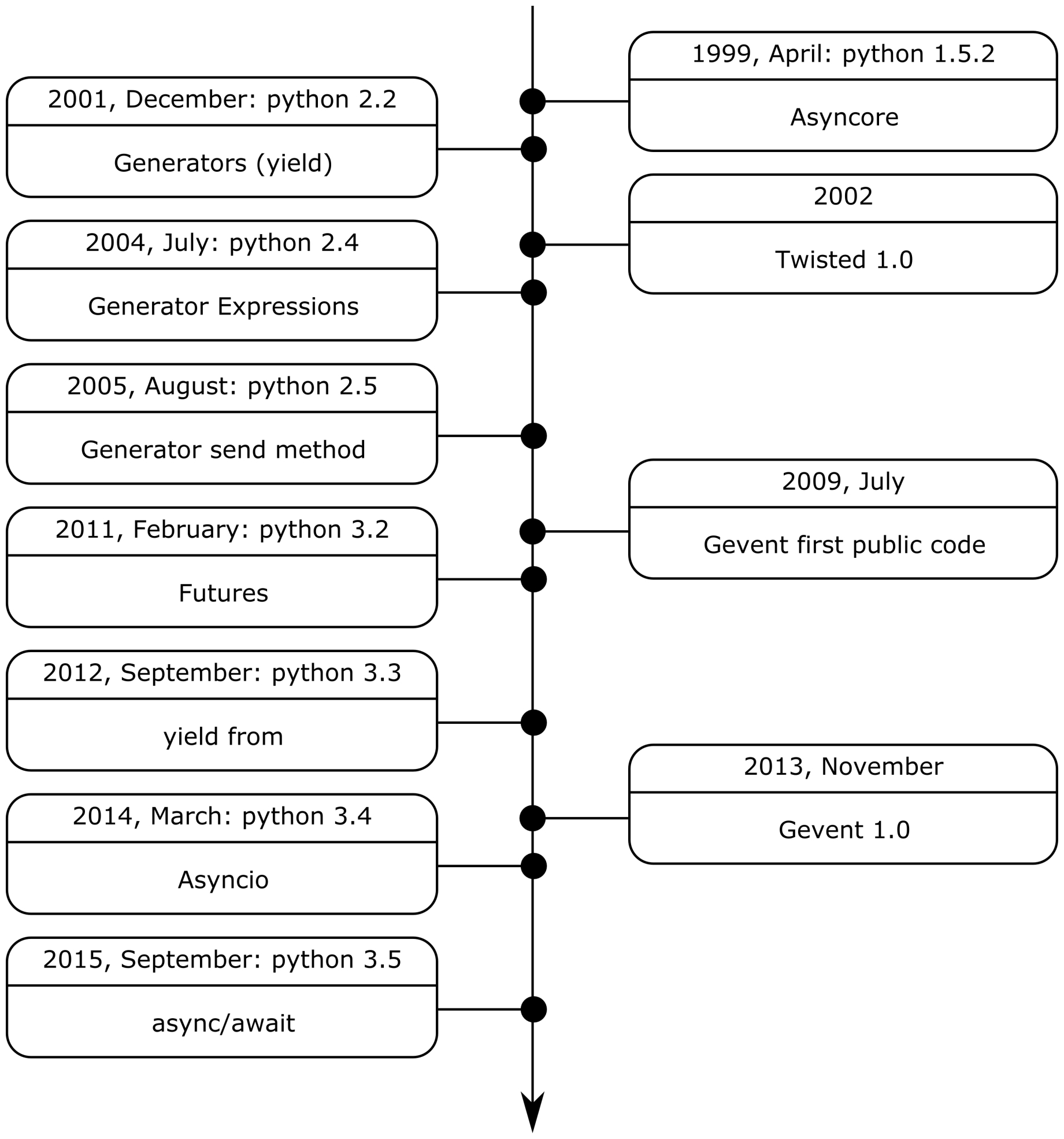Since the early days of Python, it has always been possible to do asynchronous programming, but in the old
way; that is, by using callbacks. Chapter 1, An Introduction to Reactive Programming, already explained some of the evolution in the frameworks and programming languages that made asynchronous programming easier during the last few years. The Python language naturally followed that trend, and many incremental improvements have been made since the early 2000s. Figure 2.4 shows the history of the main changes that occurred in Python concerning asynchronous programming.
The evolution on the left side are the elements that are still part of Python. The evolution on the right side concerns asynchronous frameworks and one deprecated module of the standard library:




